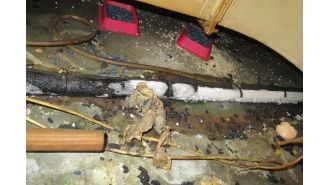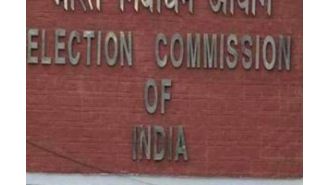To Science And Art
I was passing by Cooper Union the other day and was struck by the words on the front facade of its iconic building on Astor Place.
This phrase "to science and art" has been stuck in my mind since. I've been thinking about what happens at the intersection of science and art, how science impacts art, and how art impacts science, how New York City has been blessed to be at the intersection of science and art for at least two centuries, and how much of what is interesting to me in the technology revolution of the moment, the Internet, is at the intersection of science and art.
Peter Cooper, the founder of Cooper Union, was an inventor, industrialist, and NYC resident in the 19th century. He designed and built the first steam powered train in the US. He was the "Tim Berners-Lee" of the railroad technological revolution in the US. Cooper went on to become a very wealthy industrialist and businessman and was behind the company that laid the first cross atlantic telegraph cable. He was all about technology, science, innovation, and business. And yet, when he created and endowed a free institution of higher education, he understood that it had to be for both science and art.
Science and art are seen as two very distinct endeavors and I suppose they are. But I see science and art as the yin yang of creative culture and innovation. To quote from Wikipedia, science and art are seemingly contrary forces that are interconnected and interdependent in the natural world, and they give rise to each other in turn.
I was talking to a longtime reader of this blog, Chris Dorr, last night. Chris has been working in the film industry for a long time and blogs at the Tribeca Film Festival Blog. We were talking about changes in the film business and Chris blurted out that "filmakers and software developers need to start sleeping together and it is starting to happen." Filmmaking is art, particularly great filmmaking. But the art of filmmaking has always been based on a number of fundamental scientific inventions. And Chris' point is that the art of filmmaking will continue to be impacted by scientific inventions that are happening in real time.
And science is equally inspired by art. Just check out the music playing at the all nighter coding sessions that go on at New Work City or the number of listeners in the coding room on turntable.fm and you'll see that coding computers benefits from musical stimulation.
When I look at our portfolio, I see companies like Tumblr, Etsy, Canvas, Shapeways, SoundCloud, Boxee, Kickstarter, and GetGlue that exist somewhere in the overlap between technology and art. Most of these companies are based in NYC and the ones that aren't have a strong footing here.
I was at a meeting yesterday with an economic development group in NYC. We were talking about 3D Printing, an important new technology that was "science" a decade ago. The economic development types were explaining to me why 3D Printing technology is so important to NYC. They explained that our artist and design communities need 3D Printing technology because it allows these artists to turn their ideas into objects rapidly and at lower cost. It is a game changer for artists, designers, and architects. Our portfolio company Shapeways and other innovators like MakerBot are doing just that right here in NYC.
Peter Cooper understood the importance of science and art back in the mid 19th century when he created Cooper Union. He put the two words on the facade of his building. And they remain the twin towers of innovation in NYC and all over the world two centuries later.








